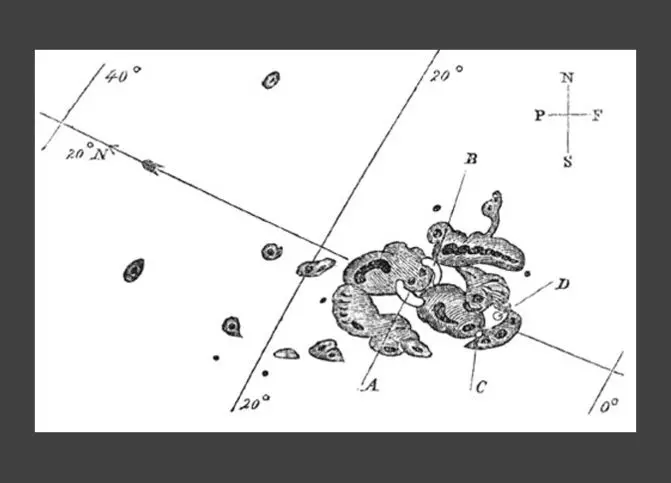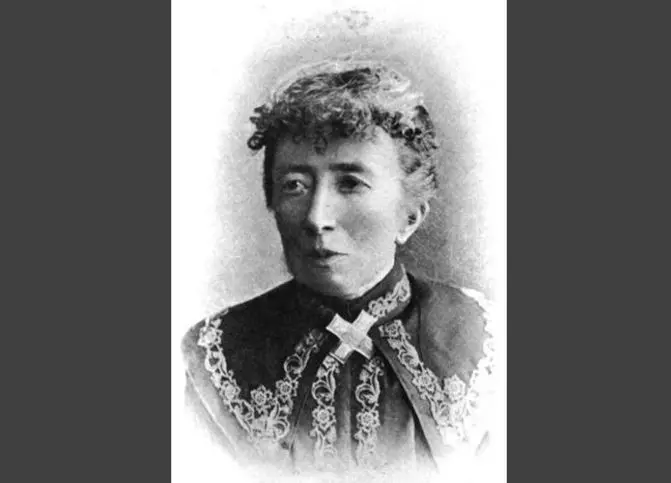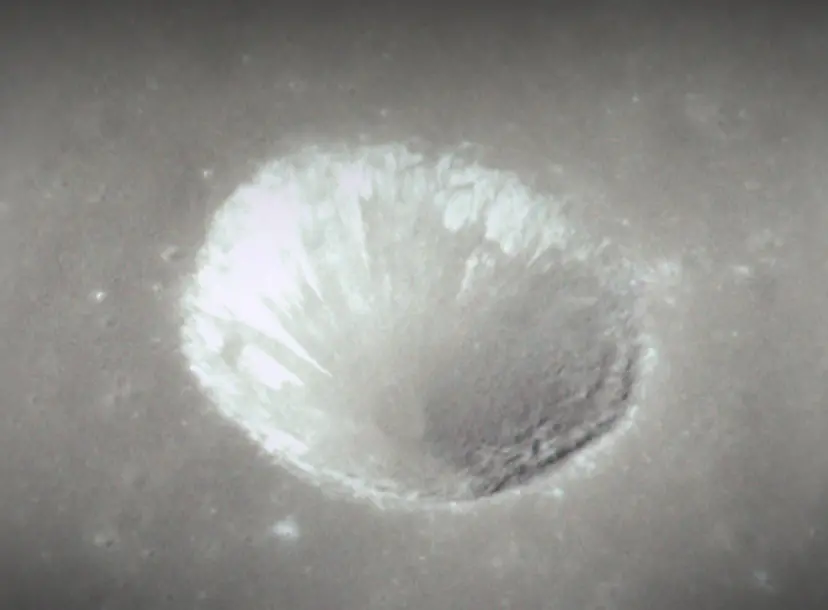Here is one of the most exciting passages from A popular history of astronomy during the nineteenth century, by Agnes Mary Clerke (1902):
'A singular circumstance has now to be recounted. On the 1st of September, 1859, while Carrington was engaged in his daily work of measuring the positions of sun-spots, he was startled by the sudden appearance of two patches of peculiarly intense light within the area of the largest group visible. His first idea was that a ray of unmitigated sunshine had penetrated the screen employed to reduce the brilliancy of the image; but, having quickly convinced himself to the contrary, he ran to summon an additional witness of an unmistakably remarkable occurrence. On his return he was disappointed to find the strange luminous outburst already on the wane; shortly afterwards the last trace vanished. Its entire duration was five minutes - from 11.18 to 11.23 A.M., Greenwich time; and during those five minutes it had traversed a space estimated at 35,000 miles!...
'From the 28th of August to the 4th September, 1859, a magnetic storm of unparalleled intensity, extent, and duration, was in progress over the entire globe. Telegraphic communication was everywhere interrupted - except, indeed, that it was, in some cases, found practicable to work the lines without batteries, by the agency of the earth-currents alone: sparks issued from the wires; gorgeous auroræ draped the skies in solemn crimson over both hemispheres, and even within the tropics; the magnetic needle lost all trace of continuity in its movements, and darted to and fro as if stricken with inexplicable panic.'

In 1981 NASA named a very small lunar crater (7km diameter) after Agnes Clerke (1842–1907), writer on astronomy, born at Skibbereen in Ireland. Around 30 craters on the moon have been named after members of the Royal Institution but as far as the Ri Collections Team can uncover, only one is a woman. (Ada Lovelace and Mary Somerville attended lectures at the Ri, but were probably not members.)
Agnes Clerke was one of a small cluster of Victorian ladies of astronomy in London. The assessment of one of these, her friend Lady Margaret Huggins, was that, ‘No purer, loftier and yet sweetly unselfish and human soul has lived’, and she nearly came to work with another, Annie Russell (later Maunder) at the Royal Greenwich Observatory.
Agnes was the younger daughter of a bank manager. She was educated at home in Skibbereen and introduced to astronomy by her father who had an astronomical telescope.
She was always interested in the history of astronomy and began publishing articles on the subject after a decade largely spent in Italy. Her first such publication was on Copernicus. But after her Italian sojourn she also wrote about the mafia: ‘Brigandage in Sicily’.
In 1877 the family settled in London. Her first book, appearing in 1885, was A popular history of astronomy during the nineteenth century a synthesis of the current state of knowledge for the lay reader following a more than 30 year gap since the previous such work. Most of the book is more thorough, measured and intellectual than my dramatic opening extract. For centuries astronomers had been concerned with cataloguing the objects in the night sky and studying their motions. Clerke was writing at the time when a new generation was working on what they were made of, the 1860s having seen a surge in interest in spectroscopy which was beginning to provide some answers.
Her choice of words in her preface to a fourth edition of 1902 sound to me enjoyably baroque but what she is actually saying (my italics) reminds me of current uncertainty over dark matter and dark energy, and the relish with which cosmologists now anticipate unexpected or even negative results.
‘Already many of the scientific doctrines implicitly accepted fifteen years ago begin to wear a superannuated aspect. Dalton's atoms are in process of disintegration; Kirchhoff's theorem visibly needs to be modified; Clerk Maxwell's medium no longer figures as an indispensable factotum; "absolute zero" is known to be situated on an asymptote to the curve of cold. Ideas, in short, have all at once become plastic, and none more completely so than those relating to astronomy. The physics of the heavenly bodies, indeed, finds its best opportunities in unlooked-for disclosures; for it deals with transcendental conditions, and what is strange to terrestrial experience may serve admirably to expound what is normal in the skies. In celestial science especially, facts that appear subversive are often the most illuminative…’

Having written about astronomy she was afforded an opportunity of practising it again when, in 1888, she was invited to spend two months at the observatory at the Cape of Good Hope with Sir David Gill where the southern sky was being mapped. We glimpse her in a letter from Gill home to Agnes’ sister:
‘Your sister sits opposite me in the study with a pile of books on either hand, which is gradually growing till she seems to be coming through a gate with rather badly built pillars on either side. At night she is to be found in the dome of the equatoreal - weather permitting, engaged in flirting with the spectra of variable stars.’
In 1890 Agnes Clerke was offered, but declined, a post at £8 per month as one of the human computers at the Royal Greenwich Observatory. It seems that observational work was also part of the job and she declined the position partly on the grounds that it would involve walking through Greenwich Park alone at night.
She was a prolific contributor to the Dictionary of National Biography, the Encyclopaedia Britannica and to other publications. Her articles were not confined to science (or the mafia) and included literature. She won the Royal Institution’s Actonian Prize of 100 guineas, which used to be awarded for writings illustrative of the wisdom and beneficence of God. Other winners have included Marie Curie and Alexander Fleming. In 1903 she was one of the very few women then to be elected an honorary member of the Royal Astronomical Society, alongside Margaret Huggins.
She died suddenly of pneumonia, aged 64, at the home which she had shared with her sister, 68 Redcliffe Square, London. She was buried nearby in Brompton Cemetery where she is in the company of other notables from the Royal Institution, including geologist Roderick Murchison, and chemist Sir William Crookes, the latter having been one of her supporters when she applied for membership of the Ri in 1902.
Laurence Scales is a volunteer working with the Ri Heritage and Collections team. He also leads unique and eclectic London tours focused on the curious history of science, invention, medicine and intelligence.
He is a graduate in engineering and has worked in various technological industries. In 2013 he helped to set the annual Talk Science quiz at the British Library.
Find out more on his website, and follow him on twitter: @LWalksLondon
This blog was first published in June 2014, but was updated in November 2022.
